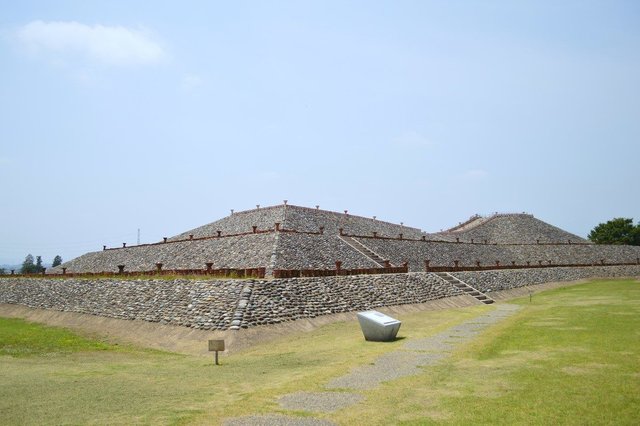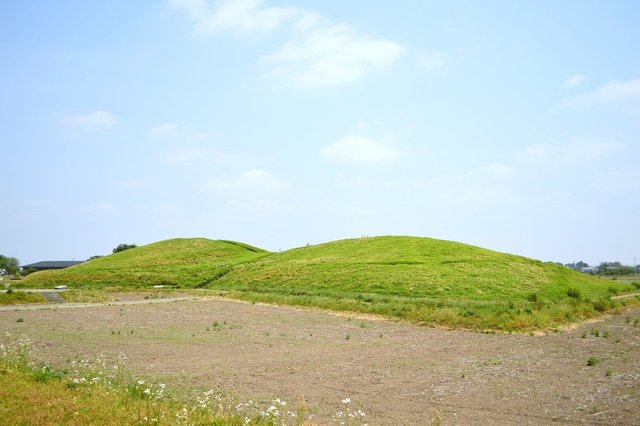Tombs of Hodota: a little-known site in Japan that has been restored to its former state

Built between the third and seventh centuries, the kofun are ancient Japanese burial mounds that served as elaborate tombs for powerful clans.
The most common form of kofun was the zenpō-kōen-fun, a massive tomb erected in the shape of a keyhole.
Kofun

Although it is estimated that there is more than 160 000 kofun scattered throughout Japan (with 700 in Tokyo alone), they are quite difficult to spot; to the untrained eye, they may look like mere mounds of earth.
For this reason, the burial mounds at the Hodota (or Hotoda) Kofun Complex in northeastern Saitama is anomalies. With the help of some significant restoration work, they look almost exactly as they would have looked 1,500 years ago.
A volcano also has much to do with their state of preservation: when nearby Mount Haruna erupted in the sixth century, its thick ash covered the three mounds that make up the complex, preserving them for more than a millennium until they were unearthed in the 19th century.

The three kofun in the complex is huge, carefully preserved, and well maintained. The Futagoyama Kofun, the largest of the three, is about 108 meters long and 10 meters high.
According to a 1935 excavation, a hole with a diameter of 4-5 meters was found in the circular rear part, which is where the burial chamber probably was.
In 1967, a Japanese Air Self-Defense Force training plane crashed next to the kofun, causing considerable damage. During the restoration work, numerous haniwa were found, some in the form of horses, people, waterfowl, etc., in addition to the more common cylindrical varieties.

Penetration into the kofun was hampered by groundwater seepage, and further work was suspended. In 1991, further excavations were carried out in conjunction with the construction of the surrounding Futagoyama Park, resulting in the discovery that the tomb had been surrounded by a moat and the discovery of more artifacts.
Yakushizuka Kofun, the second mound, is now part of the Temple Saikō-ji, and only a small portion of it is visible today.

Hachiman-zuka Kofun was home to 400,000 fukiishi, or roofing stones, and 6,000 cylindrical haniwa, or terracotta clay, figures. These haniwa typically represent humans, animals, and houses, offering tangible snapshots of daily life during the Kofun period.
Today, replicas of such haniwa surround the complex en masse, some with shields to protect the restored burial site.
How to go?

The old kofun complex is a 30-minute bus ride from Takasaki Station. If you are interested in Japanese archaeology, be sure to visit the Kamitsukenosato Museum, which displays artifacts that have been unearthed from the site.